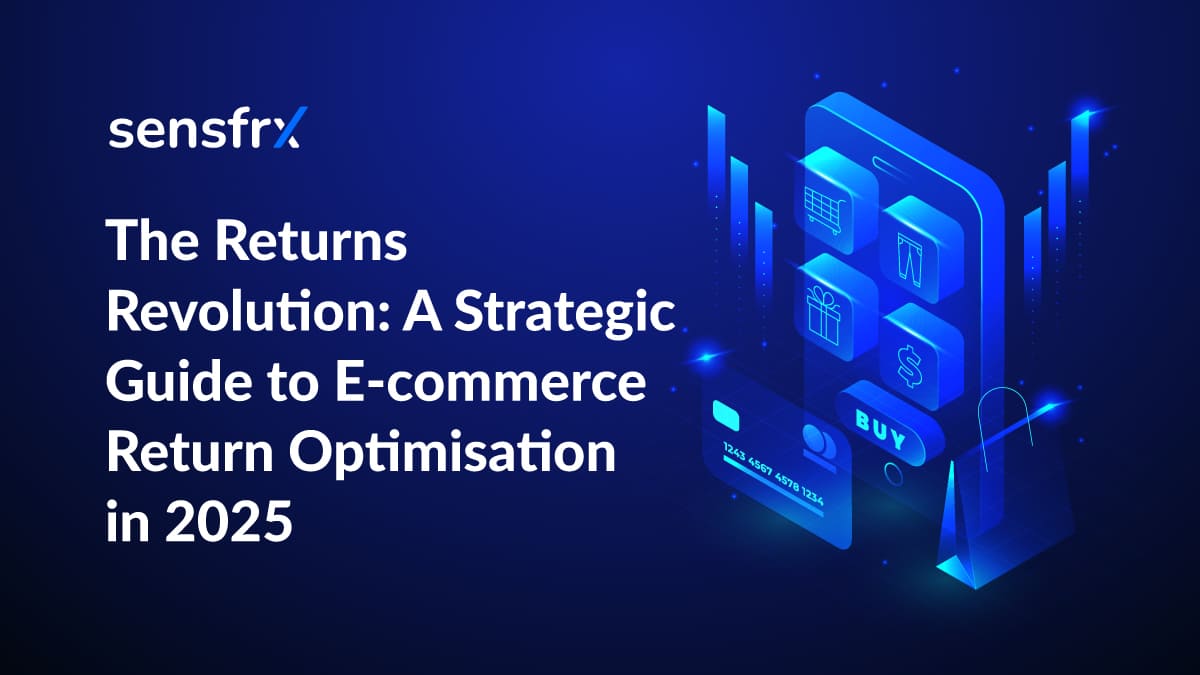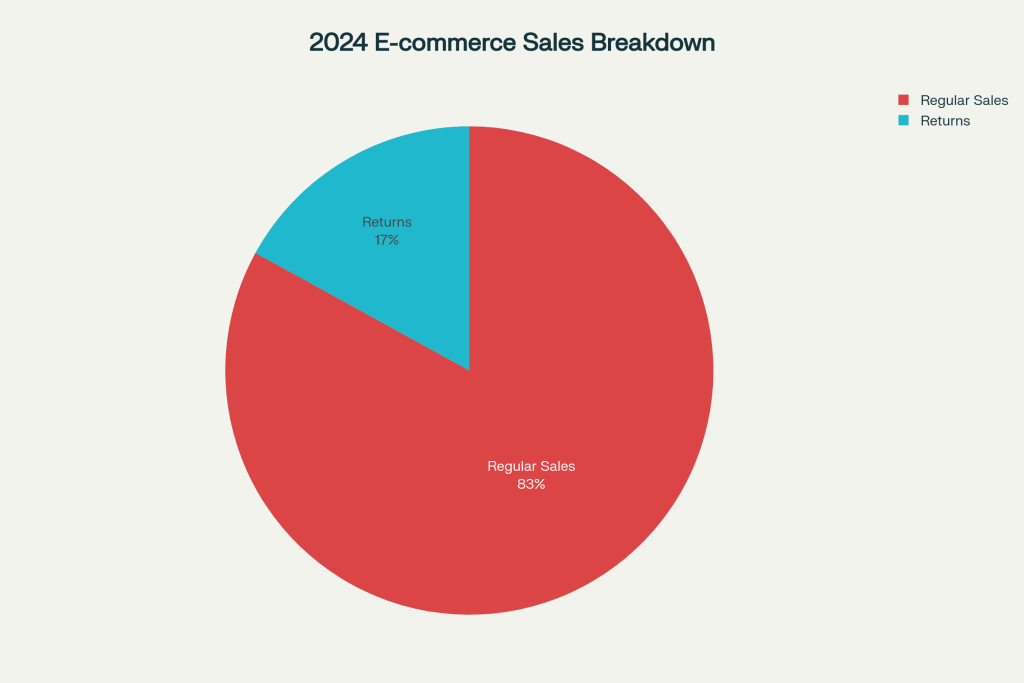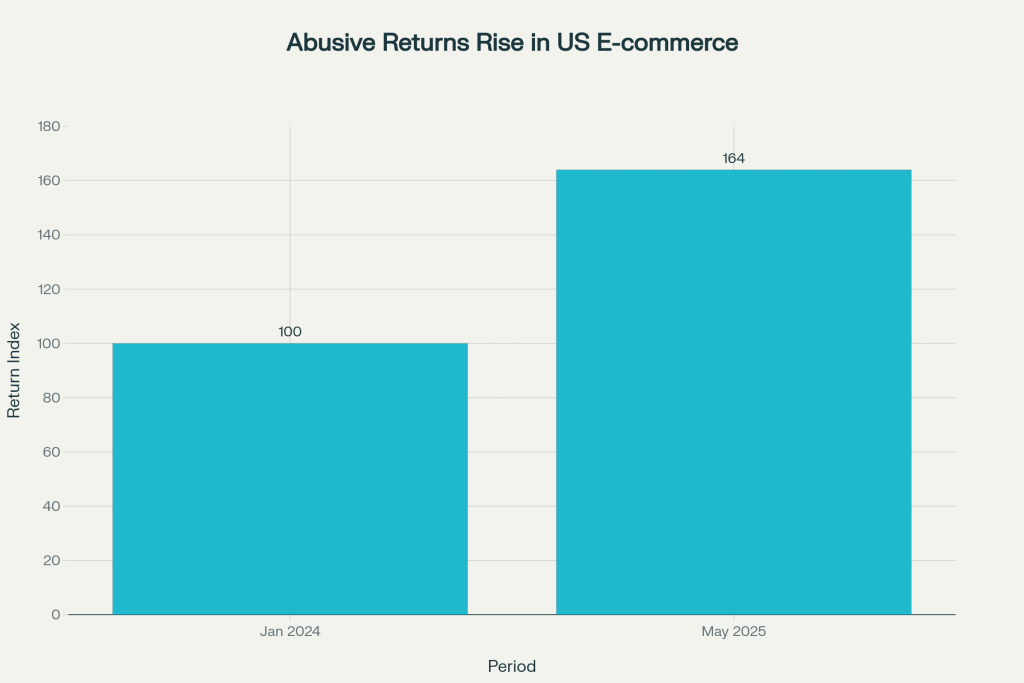
E-commerce brands often see returns as a double hit: a lost sale plus the expense of processing the return. This cycle of refunds, restocking, and dissatisfied customers can erode margins and loyalty. Yet, returns do not have to remain a drain. For years, product returns have been treated as an unavoidable cost of doing business in e-commerce. Each return represents more than a forfeited sale; it introduces operational inefficiencies, increases processing expenses, and risks damaging customer relationships. When left unmanaged, this cycle of refunds, restocking, and diminished loyalty erodes both profitability and brand equity.
Introduction: Transforming a Billion-Dollar Problem into a Competitive Advantage
Leading retailers are redefining how returns are approached. Rather than viewing them solely as a logistical burden, they are positioning returns as a strategic opportunity. By reducing avoidable return rates through precise interventions such as enhanced product accuracy, improved fit data, and customer education, organizations are proactively addressing the root causes of returns. At the same time, they are investing in streamlined, customer-centric processes to handle the returns that cannot be avoided.
This combined approach offers major competitive benefits:
- Boosts Customer Loyalty: Clear, easy return policies make customers happy and build brand trust. Turning a potential hassle into a seamless experience strengthens loyalty.
- Saves Money: Optimising the returns process cuts operational costs, allows you to recover value by reselling or fixing items, and minimises fraud and inefficiencies.
In 2025 and beyond, return optimization is not simply an operational necessity. It is a driver of resilience, profitability, and long-term growth: a strategic imperative for every e-commerce brand navigating an increasingly competitive market.

A New Competitive Edge
Modern retailers are converting returns into growth drivers by:
- Reducing return rates through root-cause analysis, such as improving product fit, ensuring accurate descriptions, and enhancing sizing guides.
- Managing unavoidable returns with seamless, customer-centric processes that reinforce trust.
Benefits
| Benefit | How It Works |
| Higher customer satisfaction | Transparent policies, easy self-service portals, and rapid refunds. |
| Stronger brand reputation | Consistent, hassle-free experiences turn a potential pain point into a loyalty booster. |
| Improved profitability | Lower processing costs, recovered value via resale or refurbishment, and reduced fraud. |
Treating returns as a strategic asset rather than a cost empowers retailers to boost loyalty, strengthen reputation, and generate long-term value.
The 2025 Landscape: Confronting Staggering Costs and Soaring Fraud

The urgency of return optimisation is evident in the escalating financial impact of returns. In 2024, US retailers faced $890 billion in returned goods, a figure projected to grow in 2025. E-commerce return rates, historically between 20% and 30%, are expected to reach 24.5% in 2025, compared to just 8–10% for brick-and-mortar stores. This gap stems from customers’ inability to physically interact with products online, leading to mismatched expectations. Compounding this challenge is the rise in return fraud, with a 64% increase in abusive returns in the first half of 2025, costing retailers over $103 billion annually. These statistics underscore the need for a strategic approach to returns management.
The Strategic Imperative: Why Returns Are No Longer Just a Cost of Doing Business
The Escalating Financial Burden: The True Cost of a Return
Returns are far more than a lost sale. Each return triggers a cascade of costs, including shipping, processing, inspection, and restocking. The true cost of a $1 return can reach $0.85 when factoring in these expenses, plus inventory depreciation and lost future purchases. Fraudulent returns are even costlier, with every $100 in fraudulent orders costing retailers $207 due to chargebacks and operational overheads. Without optimisation, returns pose a direct threat to profitability.
The Modern Consumer Mandate: Meeting Expectations for Trust and Convenience
Today’s consumers view free, hassle-free returns as a fundamental expectation, not a luxury. Research shows 74% of shoppers won’t buy if return shipping isn’t free, and 62.58% demand a straightforward process. A clear, transparent return policy is a critical trust-building tool, reducing cart abandonment and boosting conversions. Retailers like Amazon have set a high bar, making a customer-centric returns process non-negotiable.
The Loyalty Imperative: How Returns Shape Brand Perception
The returns process is a pivotal touchpoint that can make or break customer loyalty. A negative experience drives 65% of consumers to abandon a brand, while a seamless process encourages 84% to return. Free, easy returns can increase future spending by 158–457%, transforming a potential loss into an investment in long-term customer value. However, overly generous policies can enable costly behaviours like bracketing, requiring a balanced approach.

The Anatomy of E-commerce Return Fraud: Identifying and Understanding Abusive Behaviours
A Taxonomy of Return Fraud
Return fraud is a growing threat, costing retailers billions annually. Below are the most common types, with definitions and examples:
| Fraud Type | Definition | Example |
| Serial Returning | Habitually buying and returning most orders, often exploiting lenient policies. | A customer buys 10 items monthly, returning 8 consistently. |
| Wardrobing | Buying an item, using it once, and returning it as unused. | Wearing a dress to an event with tags hidden, then returning it. |
| Bracketing | Ordering multiple sizes/colours of an item, intending to return most. | Buying three sizes of a shirt, keeping one, and returning the others. |
| Bricking | Returning an electronic item after removing valuable components. | Removing a phone’s processor, then returning the non-functional device. |
| Empty Box Fraud | Returning an empty box or worthless items of similar weight. | Shipping back a box with magazines instead of a laptop. |
| Switch Fraud | Returning a cheaper or counterfeit item in place of the original. | Replace a new graphics card with a broken one in the original packaging. |
| Friendly Fraud | Falsely claiming an item wasn’t delivered or was faulty for a refund. | Claiming a delivered package never arrived to secure a chargeback. |
Understanding these behaviours is critical for designing targeted prevention strategies.
A Dual-Pronged Strategy for Holistic Return Optimization
Part 1: Enhancing the Customer Experience & Reducing Legitimate Returns
Fortifying the Digital Showroom
Preventing returns starts with accurate product representation:
- Detailed Descriptions: Include materials, fit, and care instructions.
- High-Quality Visuals: Use multiple angles, videos, and 360° views.
- Accurate Sizing: Provide dynamic sizing charts and AI-powered fit tools.
- Social Proof: Encourage customer reviews with photos and fit feedback.
Designing a Customer-Centric Returns Policy
A clear, accessible policy builds trust:
- Defined Return Windows: Set 30–60-day timelines.
- Condition Requirements: Require unworn items with tags attached.
- Transparent Costs: Clearly state who pays for return shipping.
Engineering a Frictionless Post-Purchase Journey
- Self-Service Portals: Enable customers to initiate returns and track status.
- Proactive Communication: Send automated updates on return progress.
- Omnichannel Flexibility: Offer in-store returns or third-party drop-off options.
Incentivising Value Retention
- Encourage Exchanges: Offer free shipping or bonuses for exchanges.
- Promote Store Credit: Provide instant gift cards to retain revenue.
- Live Exchanges: Allow customers to shop for replacements during the return process.
Part 2: Proactively Preventing Return Fraud & Mitigating Abuse
Dynamic, Risk-Based Policies
- High-Value Customers: Offer extended windows and instant refunds.
- High-Risk Accounts: Flag for manual review or apply return fees.
Digital Tracing and Verification
- Transactional Checks: Use Address Verification System (AVS) and CVV checks.
- Behavioural Signals: Monitor IP geolocation and email reputation.
- Cross-Channel Mapping: Integrate data to detect patterns across channels.
Product-Specific Countermeasures
- Electronics: Record serial numbers and use tamper-evident seals.
- Apparel: Use visible return tags to prevent wardrobing.
- Luxury Goods: Embed RFID/NFC tags for authenticity verification.
Harnessing Data and Automation for Intelligent Returns Management
The Returns Hierarchy of Needs
- Automation: Implement self-service portals for return initiation and label generation.
- Visibility: Integrate systems for a unified view of returned data.
- Optimisation: Use insights to reduce returns and improve operations.
From Raw Data to Actionable Insight
- Product-Level Analysis: Identify high-return SKUs.
- Reason Code Analysis: Pinpoint issues like inaccurate descriptions or transit damage.
- Customer Segmentation: Flag serial returners and reward loyal customers.
- Feedback Mining: Use customer feedback to improve products and descriptions.
The Role of AI
- Pattern Recognition: Detect trends in return reasons and customer behaviour.
- Predictive Forecasting: Anticipate return volumes for better resource planning.
- Risk Assessment: Flag suspicious orders for manual review.
Automating Reverse Logistics
- Return Authorization: Auto-approve valid returns and generate labels.
- Inventory Updates: Sync returned items with warehouse systems.
- Intelligent Routing: Route returns to optimal locations based on demand.
Conclusion: The Symbiotic Relationship Between Customer Trust and Profitability
In 2025, return optimisation is a strategic necessity, not an optional extra. A well-executed returns process builds trust, enhances loyalty, and drives profitability. By leveraging rich product information, seamless processes, and data-driven fraud prevention, retailers can transform returns from a cost centre into a competitive advantage. Investing in AI, automation, and analytics is key to staying ahead in the evolving e-commerce landscape.
Frequently Asked Questions (FAQ)
It’s a strategic approach to managing returns by reducing their frequency, streamlining processes, and preventing fraud, aiming to enhance customer satisfaction and profitability.
Returns cost retailers up to 85% of an item’s value due to shipping, processing, and depreciation. Fraudulent returns can double this cost, severely impacting margins.
Serial returning, wardrobing, bracketing, bricking, empty box fraud, switch fraud, and friendly fraud.
Offer free returns for exchanges or store credit, use dynamic policies based on customer value, and implement fraud detection like serial number validation.
Wardrobing involves using an item once (e.g., for an event) and returning it as unused. Bracketing is ordering multiple sizes/colors with the intent to return the most.
For small businesses, consider free returns for exchanges or loyalty members, or allow free in-store returns to balance cost and customer expectations.
Analyse product-level return rates, reason codes, and customer feedback to improve product descriptions, sizing, and quality control.
An instant refund provides immediate store credit or gift cards, encouraging future purchases and retaining revenue within the business.




